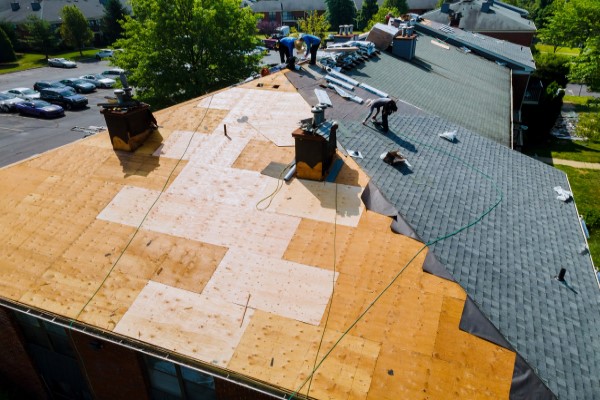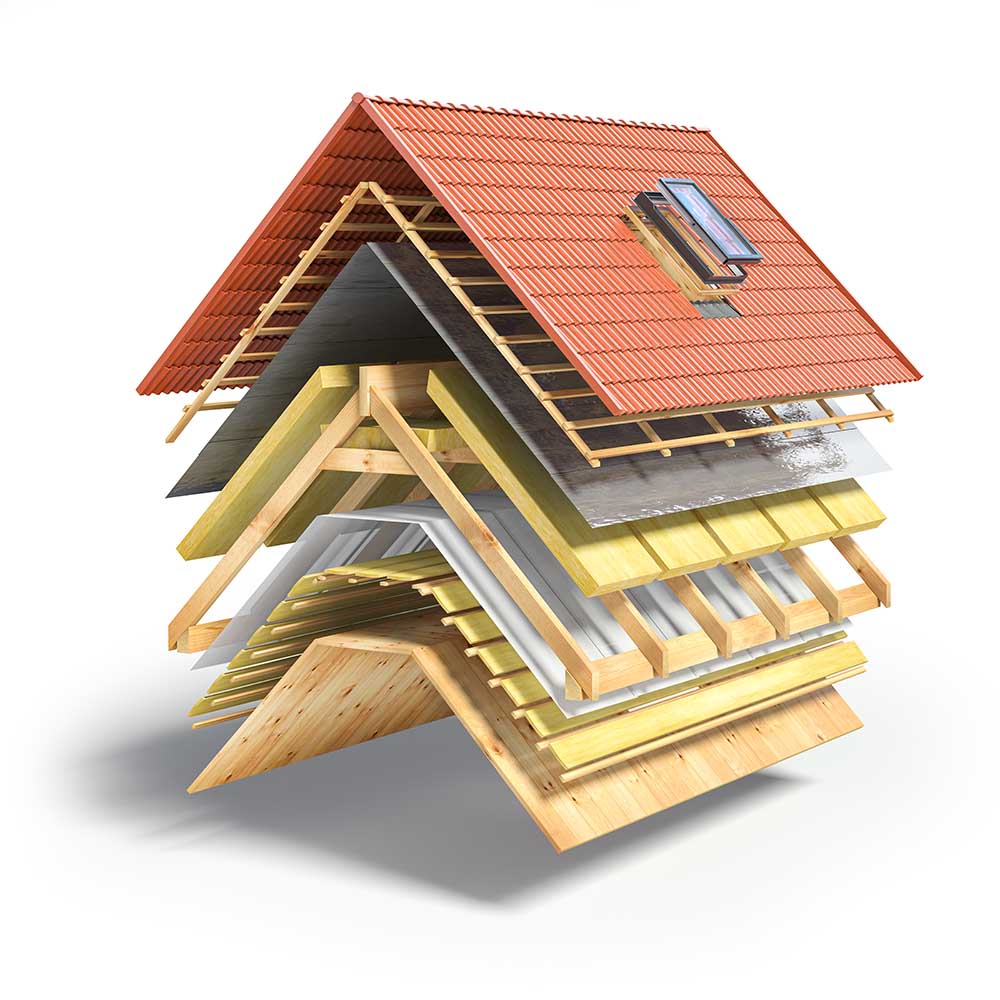Signs It’s Time for a Roof Replacement: Don’t Wait Until It’s Too Late
Find Out the Signs that You Might Need a New Roof

Watch for the signs of a Roof Replacement
Your roof is one of the most critical components of your home, protecting you, your family, and your belongings from the elements. However, like all things, roofs have a finite lifespan. Over time, wear and tear take their toll, and knowing when to replace your roof is essential to maintaining your home’s safety and functionality. Ignoring the warning signs can lead to costly damage, structural issues, and energy inefficiency.
In this comprehensive guide, we’ll explore the subtle and obvious signs that indicate it’s time for a roof replacement. Armed with this knowledge, homeowners can make informed decisions to protect their investment.
Understanding the Lifespan of a Roof
Before diving into the signs of roof failure, it’s essential to understand that different roofing materials have varying lifespans. Here’s a quick breakdown:
- Asphalt Shingles: 20–30 years
- Metal Roofing: 40–70 years
- Clay or Concrete Tiles: 50–100 years
- Slate Roofing: 75–150 years
- Wood Shakes/Shingles: 20–40 years
The lifespan of a roof depends not only on the material but also on factors like climate, maintenance, and installation quality. If your roof is nearing or has exceeded its expected lifespan, it’s time to start considering a replacement.
Obvious Signs It’s Time for a Roof Replacement
Some signs of a failing roof are impossible to ignore. These red flags indicate that action is needed immediately.
Frequent Leaks
Water stains on ceilings, walls, or attic spaces are clear signs of a leaky roof. If you’re constantly dealing with leaks, patching them may no longer be sufficient. Persistent water intrusion can weaken your home’s structure, lead to mold growth, and damage insulation.
Missing, Cracked, or Curling Shingles
Shingles protect your roof’s underlayment from water and weather. Missing, cracked, or curling shingles leave your roof vulnerable to damage. If you notice widespread issues with your shingles, it’s likely time for a replacement.
Sagging Roof
A sagging roof indicates structural issues, often caused by water damage, rot, or compromised support beams. This is a serious problem that requires immediate attention, as it could lead to a roof collapse.
Daylight in the Attic
If you can see sunlight streaming through the roof boards in your attic, it’s a sign of significant wear or damage. These gaps can allow water, pests, and cold air to enter your home.
Granules in the Gutters
Asphalt shingles lose granules over time, especially toward the end of their lifespan. If you notice a buildup of granules in your gutters or downspouts, it’s a sign your shingles are deteriorating and you may need a roof replacement.

Subtle Signs It’s Time for a Roof Replacement
Some indicators of a failing roof are less obvious but equally important. Catching these subtle signs early can save you money and prevent further damage.
Increased Energy Bills
A failing roof can compromise your home’s insulation, making it harder to regulate indoor temperatures. If you notice a sudden spike in your energy bills, your roof may no longer be providing adequate insulation or ventilation.
Moss, Algae, and Mold Growth
While moss and algae growth may seem harmless, they can trap moisture on your roof, leading to decay. Mold is an even bigger concern, as it can affect both the structural integrity of your roof and your family’s health.
Uneven or Warped Appearance
From the ground, inspect your roof for uneven surfaces or warped areas. These irregularities can indicate underlying issues such as water damage, rot, or structural weakness.
Persistent Odors in the Attic
A musty smell in your attic could signal moisture intrusion, even if you don’t see visible water stains. This odor often indicates hidden water damage or mold growth.
Loose or Damaged Flashing
Flashing around chimneys, vents, and skylights helps prevent water from seeping into your home. Damaged or loose flashing can lead to leaks and compromise your roof’s integrity.
Weather-Related Damage
Severe weather can accelerate the wear and tear on your roof, leading to the need for a roof replacement sooner than expected. After extreme weather events, it’s important to inspect your roof for damage.
Hail Damage
Hailstorms can cause dents and cracks in shingles, reducing their effectiveness. Look for pockmarks, broken shingles, or exposed underlayment after a hailstorm.
Wind Damage
High winds can lift shingles, leaving your roof vulnerable to water intrusion. If you notice loose or missing shingles after a storm, schedule an inspection.
Snow and Ice Damage
In colder climates, snow and ice accumulation can lead to ice dams, which prevent water from draining off the roof. This can cause leaks and structural damage over time.
Assessing the Risk of Delayed Roof Replacement
Delaying a roof replacement can have serious consequences, including:
- Structural Damage: Water intrusion can weaken beams, joists, and decking, leading to costly repairs.
- Mold and Mildew: Moisture buildup creates an environment for mold and mildew to thrive, posing health risks to your family.
- Decreased Home Value: A damaged roof lowers your property’s resale value and can deter potential buyers.
- Increased Repair Costs: The longer you wait, the more extensive the damage becomes, resulting in higher repair costs.
The Benefits of Timely Roof Replacement
Replacing your roof proactively offers several advantages:
- Improved Energy Efficiency: A new roof with proper insulation and ventilation reduces heating and cooling costs.
- Enhanced Curb Appeal: A new roof boosts your home’s appearance and value.
- Peace of Mind: Knowing your home is well-protected from the elements provides security and peace of mind.
Professional Roof Inspections: When to Call the Experts
While you can spot many signs of roof damage on your own, a professional inspection provides a more comprehensive assessment. Schedule a roof inspection if:
- Your roof is more than 20 years old.
- You notice any of the signs mentioned above.
- You’ve experienced severe weather in your area.
Professional roofers have the tools and expertise to identify hidden issues and recommend the best course of action.
Common Misconceptions About Roof Replacement
Roof replacement is a significant investment, and many homeowners delay or avoid it due to common misconceptions. Addressing these misunderstandings can help homeowners make better-informed decisions and avoid unnecessary stress or costs.
“Roof Replacement Can Always Be Postponed”
Many people believe that minor repairs can indefinitely delay a roof replacement. While it’s true that some issues can be addressed with repairs, this is not always a long-term solution. A roof nearing the end of its lifespan or suffering from significant damage will continue to deteriorate. Delaying replacement often leads to more extensive and costly damage, including structural issues and water intrusion.
“A Roof Replacement Is Always Too Expensive”
The cost of a roof replacement can seem daunting, but it’s important to view it as an investment in your home’s future. Homeowners often fail to consider the long-term savings a new roof provides through improved energy efficiency, lower repair costs, and increased property value. Additionally, financing options and insurance coverage (in cases of storm damage) can make a roof replacement more affordable.
“I Can Save Money by Doing It Myself”
Roof replacement is a complex and hazardous project that requires specialized skills, tools, and experience. Attempting a DIY roof replacement may seem cost-effective initially, but mistakes can lead to higher expenses down the line. Professional roofers ensure the job is done safely and correctly, providing warranties and peace of mind.
“Only Leaks Mean I Need a New Roof”
While leaks are a clear sign of roof failure, they aren’t the only indicator that a replacement is needed. Subtle signs like aging shingles, granule loss, or improper ventilation often precede visible leaks. Waiting for leaks to appear can result in extensive interior damage and higher repair costs.
By dispelling these myths, homeowners can better understand the importance of timely roof replacement and approach the process with confidence.
Preparing for a Roof Replacement: What Homeowners Should Know
A roof replacement is a significant project that requires careful preparation to ensure a smooth process. Homeowners who take the time to prepare can minimize disruptions and maximize the efficiency of the project.
Choose the Right Timing
The best time for a roof replacement is during mild weather conditions. Spring and fall are ideal seasons because they typically have fewer extreme temperatures and less precipitation. However, reputable roofing companies can complete the job year-round, adjusting for seasonal challenges.
Clear the Work Area
Before the roofing team arrives, homeowners should clear the driveway, yard, and surrounding areas of any obstacles. Move vehicles, outdoor furniture, and fragile items to protect them from debris and ensure the crew has easy access to the roof.
Communicate with Your Neighbors
Roof replacement can be noisy and disruptive, so it’s courteous to inform your neighbors about the project in advance. Letting them know the timeline can help maintain good relations during the process.
Protect the Interior
While most of the work occurs outside, vibrations and debris can affect the interior of your home. Protect items in the attic by covering them with tarps or plastic sheeting. Additionally, secure wall hangings and delicate items to prevent damage during construction.
Plan for Safety
Roofing projects can pose safety risks to family members and pets. Establish clear boundaries around the work zone, and keep children and pets indoors during the project.
Understand the Timeline
Discuss the project timeline with your contractor and ensure you’re clear on the expected duration and milestones. This helps set realistic expectations and allows you to plan around the construction schedule.
By taking these proactive steps, homeowners can ensure their roof replacement project runs smoothly and efficiently, minimizing stress and maximizing satisfaction with the results.
How to Choose the Right Roofer for a Replacement
If you determine it’s time for a roof replacement, hiring the right professional is crucial. Here’s what to look for:
- Experience: Choose a roofer with a proven track record of quality work.
- Credentials: Verify licensing, insurance, and certifications.
- References: Ask for customer testimonials or references.
- Transparency: Ensure they provide a detailed estimate and timeline.
Do You Need a Roof Replacement?
Your roof plays a vital role in protecting your home and family. Recognizing the signs of a failing roof and addressing them promptly can save you from costly repairs and provide long-term peace of mind. From visible damage like leaks and sagging to subtle clues like higher energy bills and moss growth, staying vigilant about your roof’s condition is key.
Don’t wait until it’s too late—invest in a professional inspection and take proactive steps to replace your roof when necessary. A well-maintained roof not only enhances your home’s safety and efficiency but also adds value and beauty to your property for years to come.

